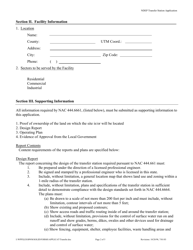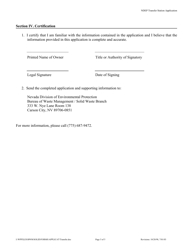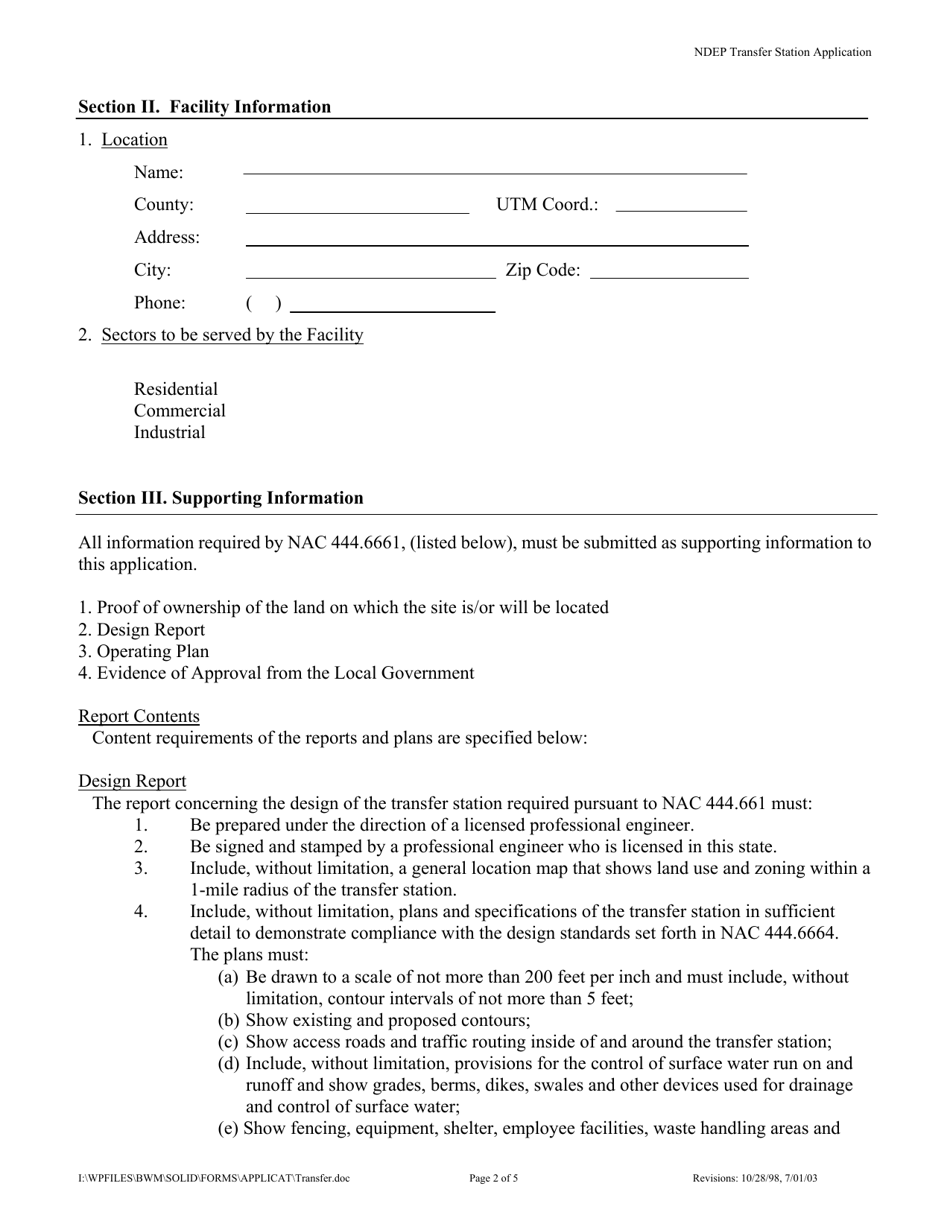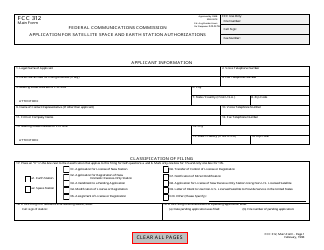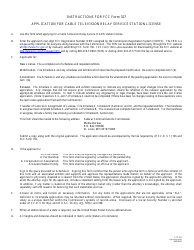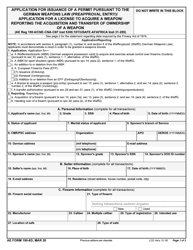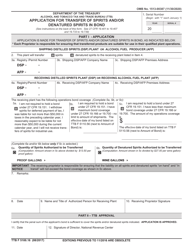Transfer Station Application - Nevada
Transfer Station Application is a legal document that was released by the Nevada Department of Conservation and Natural Resources - a government authority operating within Nevada.
FAQ
Q: What is a transfer station?
A: A transfer station is a facility where solid waste is temporarily stored before it is transported to a landfill or recycling facility.
Q: Why do we need transfer stations?
A: Transfer stations are necessary to consolidate and transport large volumes of waste efficiently.
Q: How does a transfer station work?
A: Waste is brought to the transfer station by garbage trucks, compacted and loaded onto larger trucks for transport to a landfill or recycling facility.
Q: What can I dispose of at a transfer station?
A: Transfer stations accept a wide range of solid waste including household garbage, yard waste, construction debris, and recyclable materials.
Q: Is there a fee to use a transfer station?
A: Transfer stations may charge a fee based on the type and amount of waste you dispose of.
Q: Can I recycle at a transfer station?
A: Yes, many transfer stations have recycling programs where you can drop off recyclable materials.
Q: Are transfer stations open to the public?
A: Transfer stations are typically open to the public, but some may have restrictions or require permits for certain types of waste.
Q: What are the environmental benefits of using transfer stations?
A: Using transfer stations helps reduce the amount of waste that is sent to landfills, promotes recycling, and reduces transportation costs and emissions.
Q: Are there any regulations or permits for operating a transfer station?
A: Yes, transfer stations must comply with local, state, and federal regulations and may require permits to operate.
Form Details:
- Released on July 1, 2003;
- The latest edition currently provided by the Nevada Department of Conservation and Natural Resources;
- Ready to use and print;
- Easy to customize;
- Compatible with most PDF-viewing applications;
- Fill out the form in our online filing application.
Download a printable version of the form by clicking the link below or browse more documents and templates provided by the Nevada Department of Conservation and Natural Resources.


